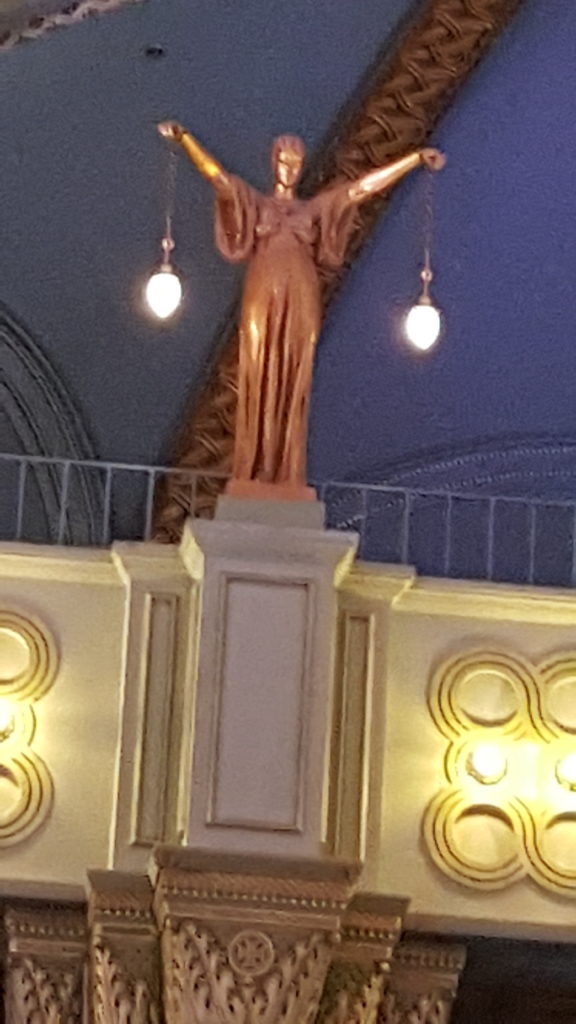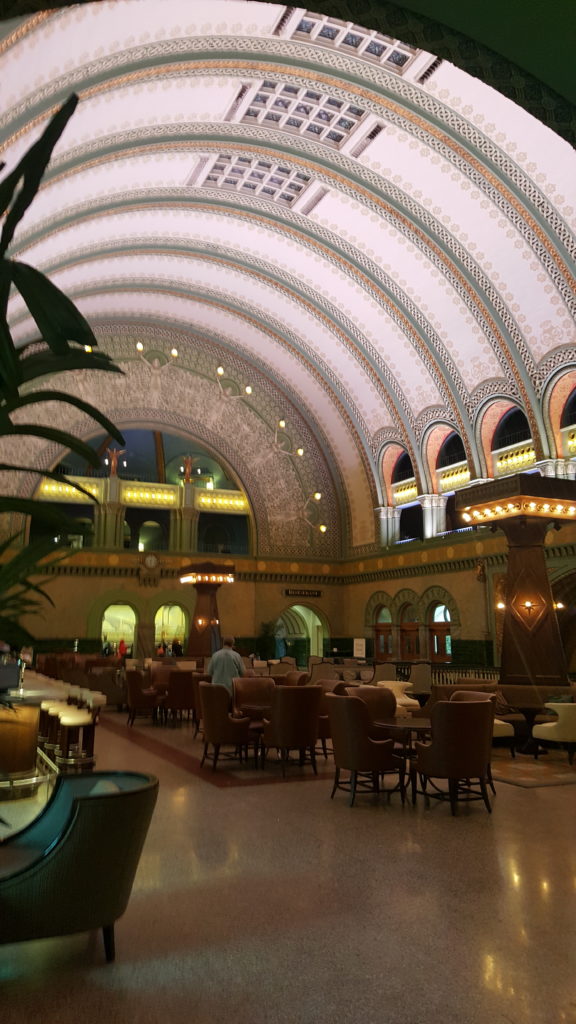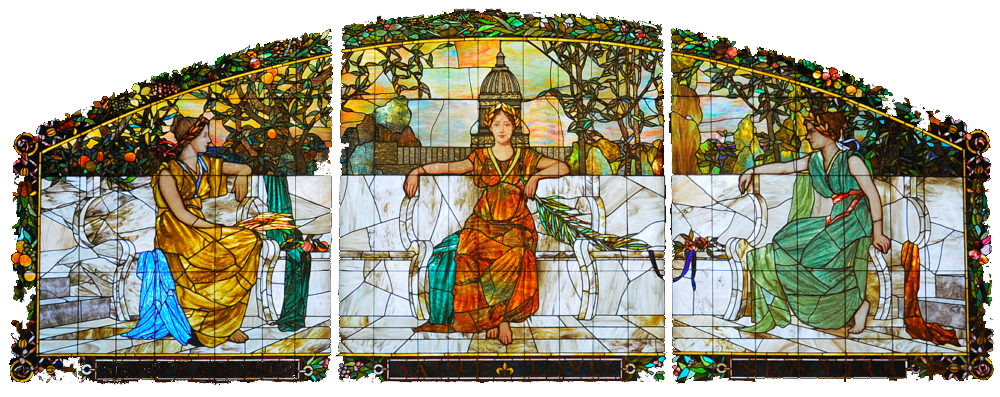Welcome to my new website! Make yourself at home–I’d offer you a drink or snacks but, you know…virtual experience. At least after a year-plus of socializing via Zoom, we’re all accustomed to lax hospitality.
Feel free to poke around. I’ll leave you to it, but before I go, I’d like to point out the gorgeous stained-glass window at the top of the page.
This is the Allegorical Window, and it overlooks the Grand Hall of Union Station in St. Louis, MO. Hand-made from Tiffany glass, the window is original to the building, in place when the first train left the station in 1894. It was there when over 100,000 people swarmed though St. Louis Union Station daily, making it one of the busiest train stations in the world. It presided over celebrity photo shoots featuring the likes of Joan Crawford and Joe DiMaggio. (That famous “Dewey Defeats Truman” photo? That happened at Union Station, too.) The window stayed put during World War II, when the Grand Hall sacrificed several of its signature architectural embellishments (including a two-ton wrought-iron chandelier with 350 light bulbs) to the war effort.

Allegories are tales within tales; peel back the top layer and another story will be found beneath the scene depicted. It’s no surprise, then, that something called the Allegorical Window has more to say than may appear at first glance. The neoclassical goddess on the left represents San Francisco. The one on the right is New York City. And there, in the middle, sits St. Louis, proud of the pivotal role she plays in connecting America from sea to shining sea. In 1894, this ability to link the country by rail was seen as a triumph of human purpose and ingenuity, and judging from the expressions on their faces, all three goddesses know it.
But just as these ladies graced St. Louis Union Station in its heyday, they also watched as the last train pulled out on October 31, 1978. The station’s size and elegance, once desirable attributes, were now liabilities. In a changing world where air had become the first choice for long-distance travel, Union Station was too expensive to maintain.
It’s easy to dismiss the symbolism of the Allegorical Window as something frozen in time, a quaint notion as obsolete as the train station itself. But even though the underlying narrative of the window’s story has changed, I still sense vitality when I look at the goddesses. I like their confidence. They’re strong, so aware that they have something to offer that change seems more like an opportunity than a roadblock.
Today, St. Louis Union Station is a National Historic Landmark, and the fact that trains no longer stop there doesn’t mean it’s lifeless. The Grand Hall with its breathtaking barrel-vaulted ceiling is now part of the Hilton Hotel’s Curio Collection. Union Station is home to various restaurants and attractions, a reinvention that still invites people to explore, even if the landscape has changed.

To me, the figures in the Allegorical Window aren’t goddesses. They’re more like muses with attitude. Their self-assurance reminds me that purpose and possibility always exist, even when situations change. These muses not only inspire, they encourage reinvention.
… which is why I want them on my team.








Gorgeous window, which you’ve captured with much more than a camera (did you take the shot?). Allegory’s got such a bad rap from modernism: high concepts/ideas/presences once walked the earth in living form. Even the odd city had its avatar, as here. It’s we who’ve learned not to see or hear them anymore, I suppose.
I love the insouciance of their postures. The elbows thrown up and resting on the back of the bench, instead of hands primly folded. Also, although St. Louis there has her ankles crossed, you can tell from the ankle of her dress her knees are wide. Not exactly manspreading but… I love the confidence.
I’ve taken more photos of the Allegorical Window than should be allowed. It’s like I thought I’d catch the figures moving or changing position if I just kept snapping. I agree with you. There are layers to everything if we choose to look.
I love the confidence, too! No apologies for who they are and what they have to offer.